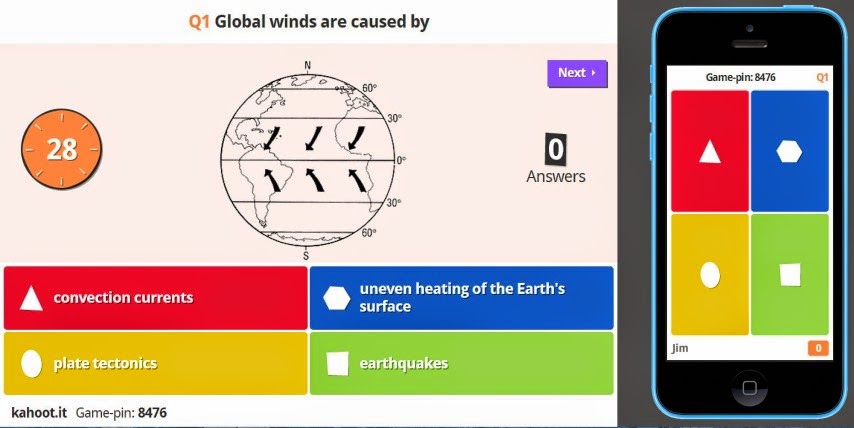this is a blog post about assistive technologyright now I’m using a program called read write and GoogleI am dictating this paragraph into my document and it’s typing it outbut it’s a little finickyI will have to go back later and add capitals and periods and spacesalthough I’m sure there’s probably a trick to it
new sentence
I figured out how to make a
Okay now I’ve stopped using Google Read&Write. I confess, I couldn’t figure out how to get it to type the words ‘new paragraph’ without it just starting a new paragraph! The special Education teachers at our school have been learning to use and teach this tool to several students this year. They like it. It has replaced Dragon Dictation for most students because it is accessible through their Chrome Desktop and in their Google Apps for Education account, therefore, text doesn't have to be transferred from one place to another. I have only had a look over my student’s shoulder a few times to see how it's going. They are much better at it than I am! It has been a real asset to many students with Learning Disabilities. Apart from the punctuation errors which were my human error, the word accuracy was right on! (I remember years of using Dragon and having to train the program every year, or version, or every time a student's voice changed, which happened a lot to my 12 year old grade 6 boys!) Students are using Read & Write for almost all written projects. The reading capabilities are even more impressive. In the image below, The yellow highlighted words are being read aloud, the blue is the current word. There are also highlighter tools for collecting jot notes. I have seen students collect words into a document and then use the speech capabilities to turn the phrases into sentences. A great lesson in paraphrasing and an opportunity to address plagiarism.
I figured out how to make a
Okay now I’ve stopped using Google Read&Write. I confess, I couldn’t figure out how to get it to type the words ‘new paragraph’ without it just starting a new paragraph! The special Education teachers at our school have been learning to use and teach this tool to several students this year. They like it. It has replaced Dragon Dictation for most students because it is accessible through their Chrome Desktop and in their Google Apps for Education account, therefore, text doesn't have to be transferred from one place to another. I have only had a look over my student’s shoulder a few times to see how it's going. They are much better at it than I am! It has been a real asset to many students with Learning Disabilities. Apart from the punctuation errors which were my human error, the word accuracy was right on! (I remember years of using Dragon and having to train the program every year, or version, or every time a student's voice changed, which happened a lot to my 12 year old grade 6 boys!) Students are using Read & Write for almost all written projects. The reading capabilities are even more impressive. In the image below, The yellow highlighted words are being read aloud, the blue is the current word. There are also highlighter tools for collecting jot notes. I have seen students collect words into a document and then use the speech capabilities to turn the phrases into sentences. A great lesson in paraphrasing and an opportunity to address plagiarism.
 Also at my school are many well used AlphaSmarts. They are portable, battery powered, word-processing keyboards. Students can keep several (8) ongoing files and plug into a printer when needed. For students with fine motor issues they were a great alternative. These were quite exciting until iPads and netbooks came along. I know of a few students still using them but I think I spotted a pile of unused ones in a cupboard earlier this year. While they may be outdated now, they were an important step towards independence for many learners.
Also at my school are many well used AlphaSmarts. They are portable, battery powered, word-processing keyboards. Students can keep several (8) ongoing files and plug into a printer when needed. For students with fine motor issues they were a great alternative. These were quite exciting until iPads and netbooks came along. I know of a few students still using them but I think I spotted a pile of unused ones in a cupboard earlier this year. While they may be outdated now, they were an important step towards independence for many learners. The final device to assist learners in my classroom is the Front Row Amplifier System. All the classrooms in the new part of my school are equipped with this sound system. It is fabulous! The 'necklace' is easy to wear and transfers nicely from teacher to student. There is also a handheld microphone. Both devices can connect to any secondary source, such as a TV, DVD, CD, computer, or MP3 player. The sound is clear and evenly dispersed throughout the room. Every student benefits from this technology and certainly the teacher's voice has less wear and tear. I've seen students with weak voices gain confidence, students who need to sit at the back of a group able to hear clearly, students with attention deficits stop what they are doing more quickly and focus on the speaker. Some teachers in the older sections of the school have some type of portable microphone they use occasionally but none are as convenient as the one I am lucky to have.
The final device to assist learners in my classroom is the Front Row Amplifier System. All the classrooms in the new part of my school are equipped with this sound system. It is fabulous! The 'necklace' is easy to wear and transfers nicely from teacher to student. There is also a handheld microphone. Both devices can connect to any secondary source, such as a TV, DVD, CD, computer, or MP3 player. The sound is clear and evenly dispersed throughout the room. Every student benefits from this technology and certainly the teacher's voice has less wear and tear. I've seen students with weak voices gain confidence, students who need to sit at the back of a group able to hear clearly, students with attention deficits stop what they are doing more quickly and focus on the speaker. Some teachers in the older sections of the school have some type of portable microphone they use occasionally but none are as convenient as the one I am lucky to have.  These are just a few of the devices that are available in our school that I can offer when the student walks in to my room each September. I am grateful for all of the ways I can help them learn whether it's headphones, or iPads, or Chromebooks, or audiobooks, or Learn 360 videos. It is my responsibility to stay up to date with all resources. As well, checking out a few of the links of current research and information about the impact of assistive technology to help students reach their potential is important too. Here are a few links I have visited. I'm excited to see the advancements that will be made in the next few years. While I didn't really like seeing those AlphaSmarts piled up, it was a sign that technology is improving at a fast rate. Perhaps every student will have an assistive device someday!???
These are just a few of the devices that are available in our school that I can offer when the student walks in to my room each September. I am grateful for all of the ways I can help them learn whether it's headphones, or iPads, or Chromebooks, or audiobooks, or Learn 360 videos. It is my responsibility to stay up to date with all resources. As well, checking out a few of the links of current research and information about the impact of assistive technology to help students reach their potential is important too. Here are a few links I have visited. I'm excited to see the advancements that will be made in the next few years. While I didn't really like seeing those AlphaSmarts piled up, it was a sign that technology is improving at a fast rate. Perhaps every student will have an assistive device someday!???








